Discover 20 hidden attractions, cool sights, and unusual things to do in Trieste (Italy). Don't miss out on these must-see attractions: Miramare Castle, Trieste Cathedral, and Railway Museum Trieste Campo Marzio. Also, be sure to include Piazza Unità d'Italia in your itinerary.
Below, you can find the list of the most amazing places you should visit in Trieste (Friuli-Venezia Giulia).
Table of Contents
Miramare Castle
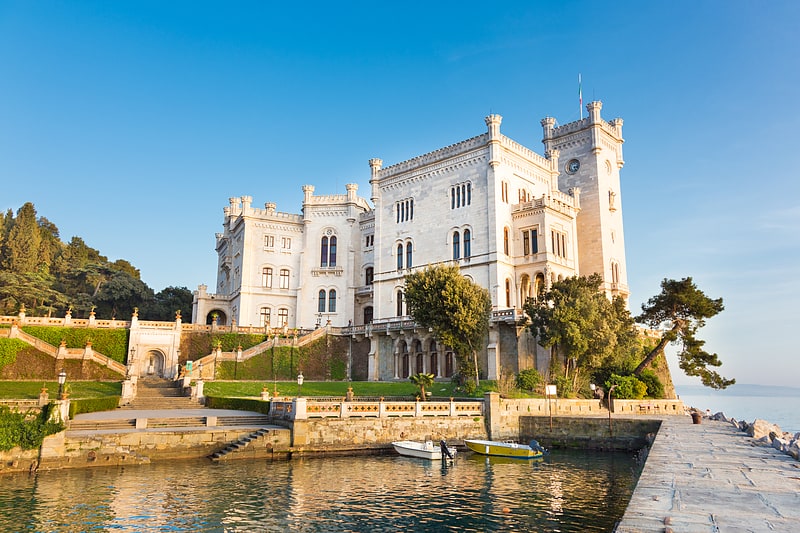
Also known as: Castello di Miramare
Hapsburg residence with period interiors. Miramare Castle is a 19th-century castle direct on the Gulf of Trieste between Barcola and Grignano in Trieste, northeastern Italy. It was built from 1856 to 1860 for Austrian Archduke Ferdinand Maximilian and his wife, Charlotte of Belgium, later Emperor Maximilian I and Empress Carlota of Mexico, based on a design by Carl Junker.
The castle's grounds include an extensive cliff and seashore park of 22 hectares (54 acres) designed by the archduke. The grounds were completely re-landscaped to feature numerous tropical species of trees and plants.[1]
Address: Viale Miramare, 34151 Trieste
Trieste Cathedral

Also known as: Cattedrale di San Giusto
Mosaic-filled cathedral on Roman ruins. Trieste Cathedral, dedicated to Saint Justus, is a Roman Catholic cathedral and the main church of Trieste, in northern Italy. It is the seat of the Bishop of Trieste.
In 1899, Pope Leo XIII granted it the status of a basilica minor.[2]
Address: Piazza della Cattedrale, 2, 34121 Trieste
Railway Museum Trieste Campo Marzio

Museum in Trieste, Italy. The Trieste Campo Marzio Railway Museum is a museum in Trieste, concerned with railway and tram transportation. It is housed in Trieste Campo Marzio railway station, the former Trieste Staatsbahnhof during the Austro-Hungarian period and one of the two main terminal stations in Trieste. Since July 2017, the museum has been closed for renovation by the Fondazione FS.[3]
Address: Via Giulio Cesare, 1, 34123 Trieste
Piazza Unità d'Italia
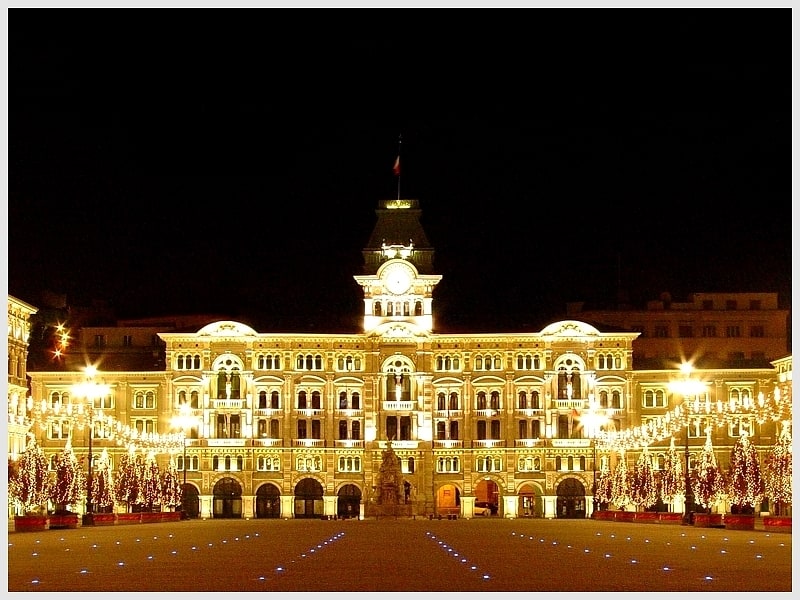
Public square with landmark fountain. Piazza Unità d'Italia is the main square in Trieste, a seaport city in northeast Italy. Located at the foot of the hill with the castle of San Giusto, the square faces the Adriatic Sea. It is often said to be Europe's largest square located next to the sea. The square was built during the period when Trieste was the most important seaport of the Austrian-Hungarian Empire and includes the city's municipal buildings and other important palaces.
Before 1919 it was known as Piazza Grande, or Great Square. The local Slovenes still refer to it as Veliki trg (Great Square), both in daily speech and in the media. In the last decade, the term Trg zedinjenja (Unity Square) or Trg zedinjenja Italije (Unity of Italy Square) has also become popular, especially in official documents.
The square itself has occasionally been used as a concert venue, with Green Day using the square as a venue for a show on their 99 Revolutions Tour in 2013. The attendance was of 12,000 people. In 2016, it was used by heavy metal band Iron Maiden as a concert venue (it was the third of three Italian dates): the concert was sold out with over 15,000 fans.
The square is also occasionally used for visits of foreign heads of state and meetings. In November 2013 President of Russia Vladimir Putin met Italian Prime Minister Enrico Letta there for bilateral talks. In July 2017 a trilateral meeting attended by Angela Merkel, Emmanuel Macron, and Paolo Gentiloni was held there, as well as the fourth Western Balkans Summit.[4]
Saint Spyridon Church
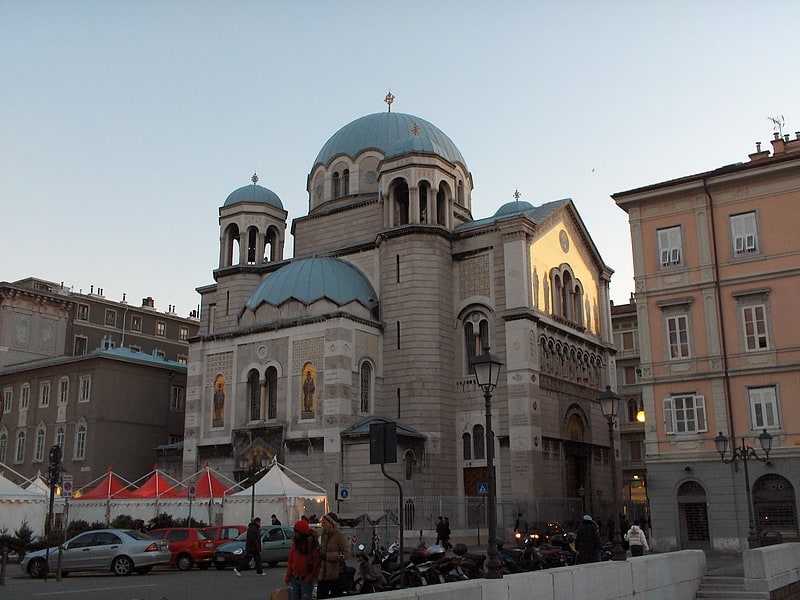
Also known as: Tempio serbo-ortodosso della Santissima Trinità e di San Spiridione
18th-century Serbian Orthodox church. Saint Spyridon Church is a Serbian Orthodox church in Trieste, Italy.[5]
Address: Via Genova, 12, 34121 Trieste
Faro della Vittoria
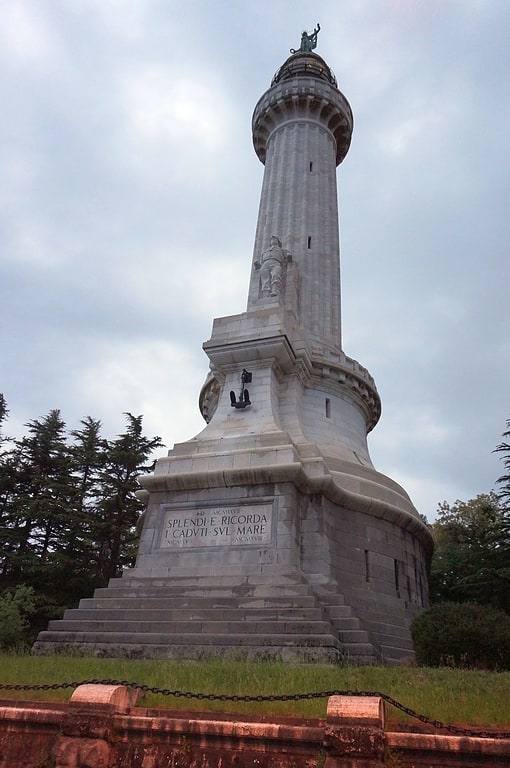
Lighthouse with dramatic bay views. Vittoria Light also known as the Victory Lighthouse, is an active lighthouse in Trieste, Italy, serving the Gulf of Trieste. It is located on the hill of Gretta, off the Strada del Friuli. At a height of 223 feet it is one of the tallest lighthouses in the world.[6]
Address: Strada del Friuli 141, 34136 Trieste
Greek Orthodox Church of San Nicolò dei Greci
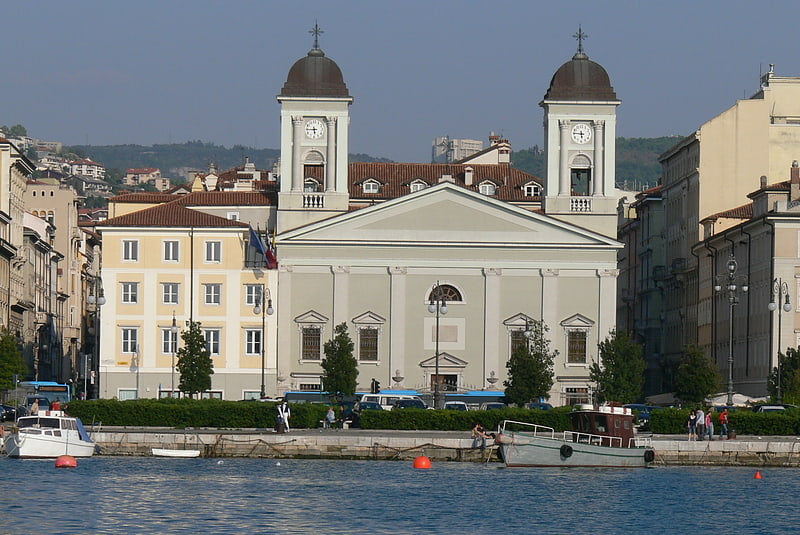
The Greek Orthodox Church of San Nicolò dei Greci, Trieste, Italy, is a historical Greek Orthodox Church built in 1784-1787 and re designed by architect Matteo Pertsch. The building is also known as the Greek Orthodox Church of San Nicholas and Most Holy Trinity. The iconostasis was painted by Spyridon Sperantzas[7]
Address: Piazza Niccolo Tommaseo, 34121 Trieste
Risiera di San Sabba
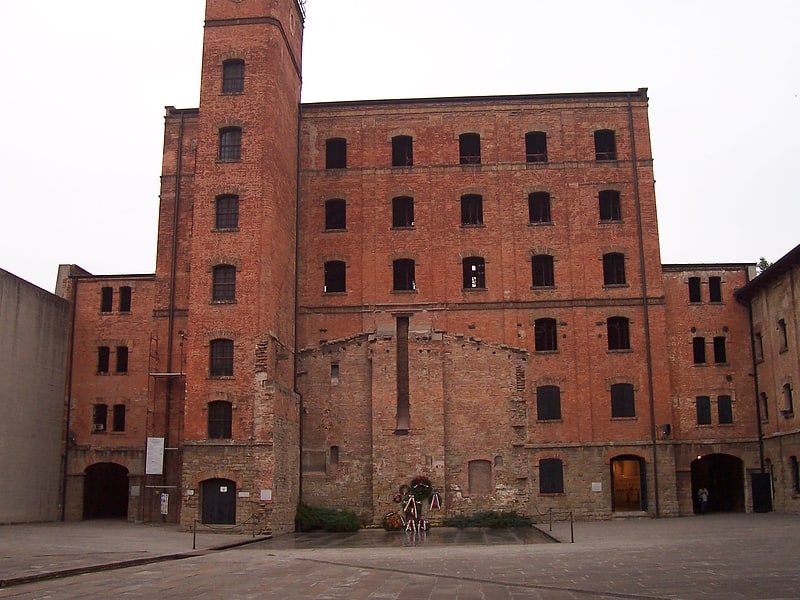
Museum in former Nazi concentration camp. Risiera di San Sabba is a five-storey brick-built compound located in Trieste, northern Italy, that functioned during World War II as a Nazi concentration camp for the detention and killing of political prisoners, and a transit camp for Jews, most of whom were then deported to Auschwitz. SS members Odilo Globočnik and Karl Frenzel, and Ivan Marchenko are all said to have participated in the killings at this camp. The cremation facilities, the only ones built inside a concentration camp in Italy, were installed by Erwin Lambert, and were destroyed before the camp was liberated. Today, the former concentration camp operates as a civic museum.[8]
Address: Via Giovanni Palatucci, 5, 34148 Trieste
Sant'Antonio Taumaturgo

The Church of Sant'Antonio Taumaturgo, is the main religious building in the Borgo Teresiano in the centre of Trieste as well as the city's largest Catholic church. It stands on a square also known as Sant’Antonio Nuovo, at the end of the Grand Canal.
The building project dates back to 1808, but work only began in 1825. The church has a facade of ionic columns with six statues sculpted by Francesco Bosa in 1842, representing Saint Justus, Saints Sergius and Bacchus, Saint Servulus, Saint Maurus, Saint Euphemia and Saint Tecla.[9]
Address: Via Amilcare Ponchielli, 2, 34122 Trieste
Kleines Berlin
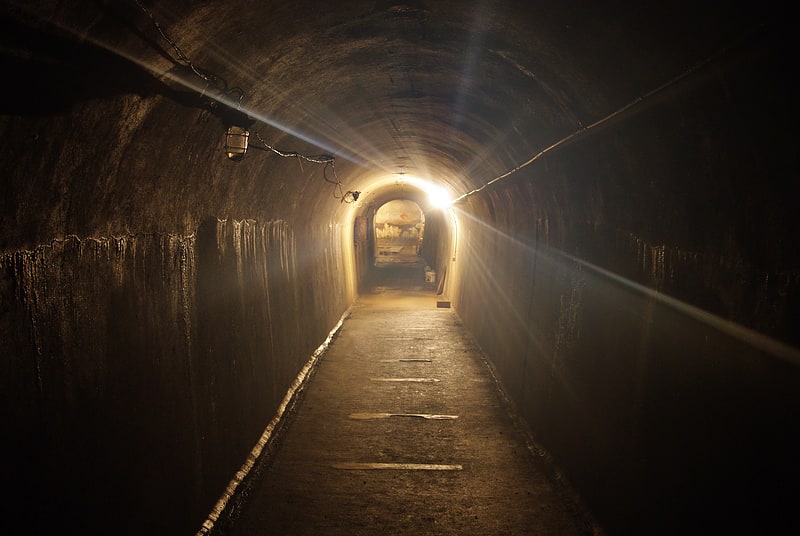
Also known as: Kleine Berlin
Historic WWII tunnels with guided tours. Kleines Berlin is the complex of underground air-raid tunnels dating to World War II, which still exists in Trieste, Italy.[10]
Address: Via Fabio Severo, Trieste
Museo Revoltella
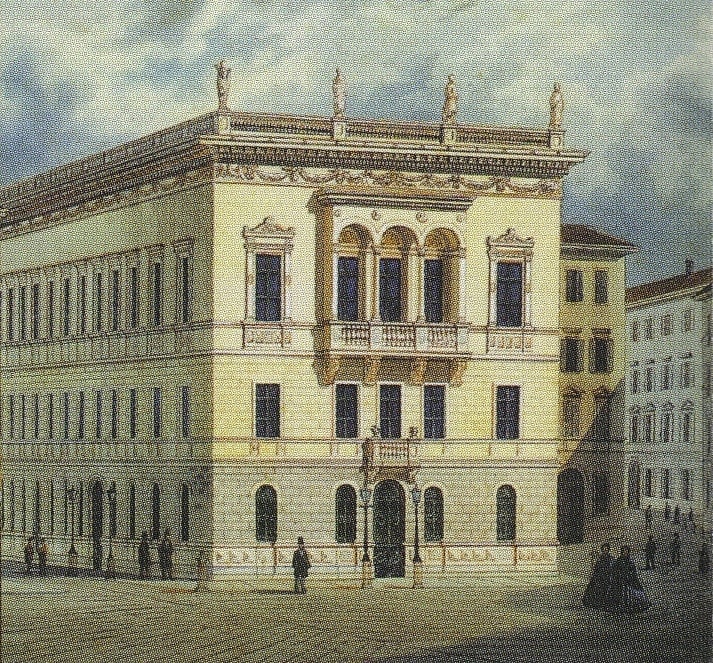
Art gallery in Trieste, Italy. The Revoltella Museum is a modern art gallery founded in Trieste in 1872 by Baron Pasquale Revoltella. The baron, after he left his house to the city and all the works, furniture and books it contained.[11]
Address: Via Armando Diaz, 27, 34123 Trieste
Stadio Nereo Rocco
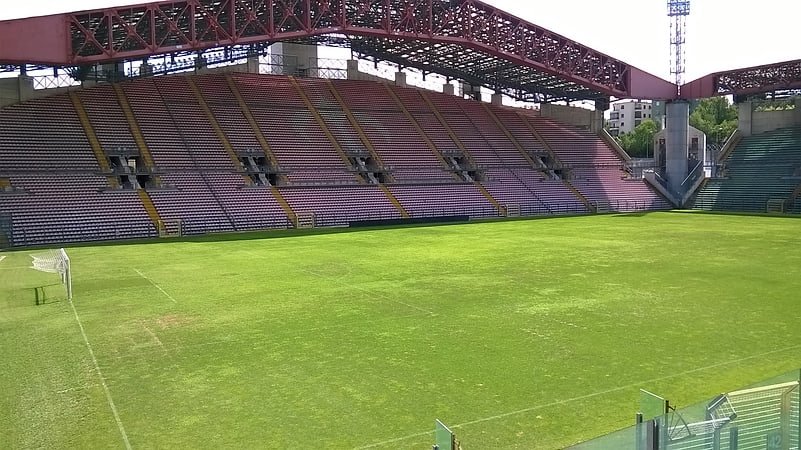
Stadium in Trieste, Italy. Stadio Nereo Rocco is a football stadium in Trieste, Italy. It is currently the home of Triestina, named after former player and manager Nereo Rocco. The stadium holds 21,000.
Cagliari played their final home games of the 2011–12 Serie A season at the ground, due to restoration of their Stadio Sant'Elia.[12]
Address: Piazzale Atleti Azzurri d'Italia, 5, 34148 Trieste
Museo di Storia Naturale
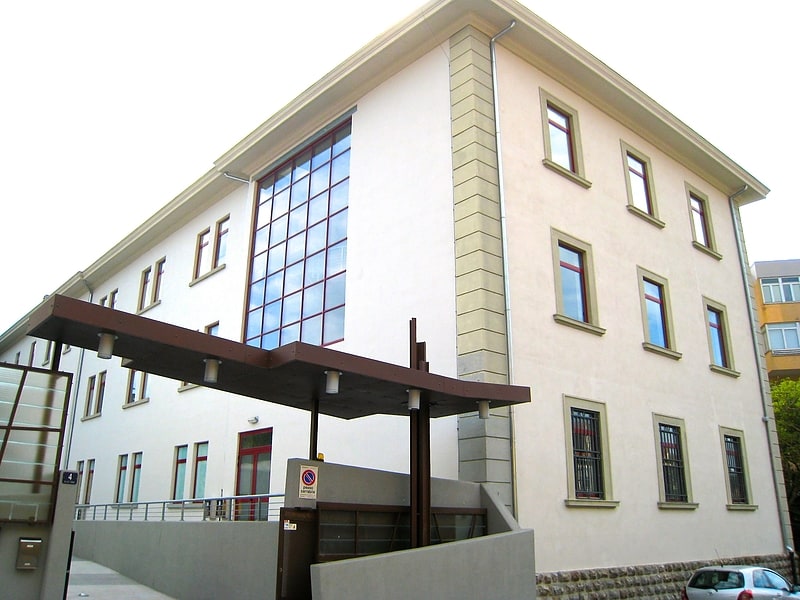
Also known as: Museo di storia naturale
Natural history museum dating to 1846. Civico Museo di Storia Naturale di Trieste is a natural history museum in Trieste, northern Italy. It contains several collections, including more than two millions botanical, zoological, mineralogical, geological, and paleontological specimens.[13]
Address: Via Dei Tominz 4, 34139 Trieste
Temple of Monte Grisa

Also known as: Santuario mariano di Monte Grisa
Church in Italy. The Temple of Monte Grisa, officially the National Shrine of Mary Mother and Queen, is a Roman-Catholic church north of the city of Trieste. Located at an altitude of 300 metres on the edge of the Karst Plateau above Barcola and Miramare Castle it is a most conspicuous landmark.
It was built at the initiative of Antonio Santin, since 16 May 1938 Bishop of Trieste and Koper. Seeing the riots between the Nazi-German occupiers and the Comitato di Liberazione Nazionale on 30 April 1945 he made a vow to erect a church, if Trieste was saved from total destruction. The city was saved and in 1959 Santin obtained permission from Pope John XXIII to build a pilgrims church dedicated to the Holy Mary as a symbol of the peace and unity of all people.
The temple was designed by Professor Antonio Guacci, after sketches by Santin. The triangular structures should evoke the letter M as a symbol of the Holy Mary. The church was built in between 1963 and 1965, after a first stone had been laid on 19 September 1959. Santin inaugurated the church on 22 May 1966. On 1 May 1992 Pope John Paul II visited the temple. In 2010 restoration works took place, because the concrete had suffered from alkali-silica reaction.[14]
PalaTrieste
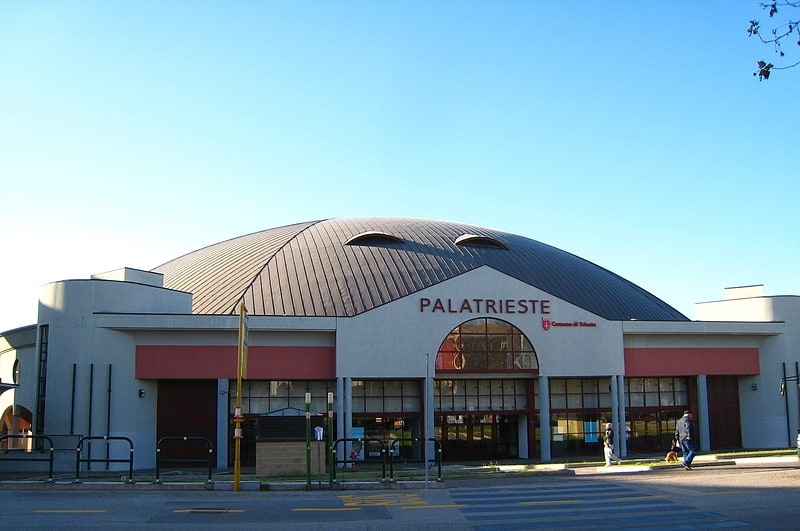
Sports dome in Trieste, Italy. PalaTrieste, or Allianz Dome for sponsorship reasons, officially known as Palazzo dello sport Cesare Rubini is an indoor sporting arena located in Trieste, Italy. Opened in 1999, it has a seating capacity for 6,943 people and is currently home for Allianz Pallacanestro Trieste basketball team.[15]
Address: Via Flavia 3, 34100 Trieste
Teatro Lirico Giuseppe Verdi
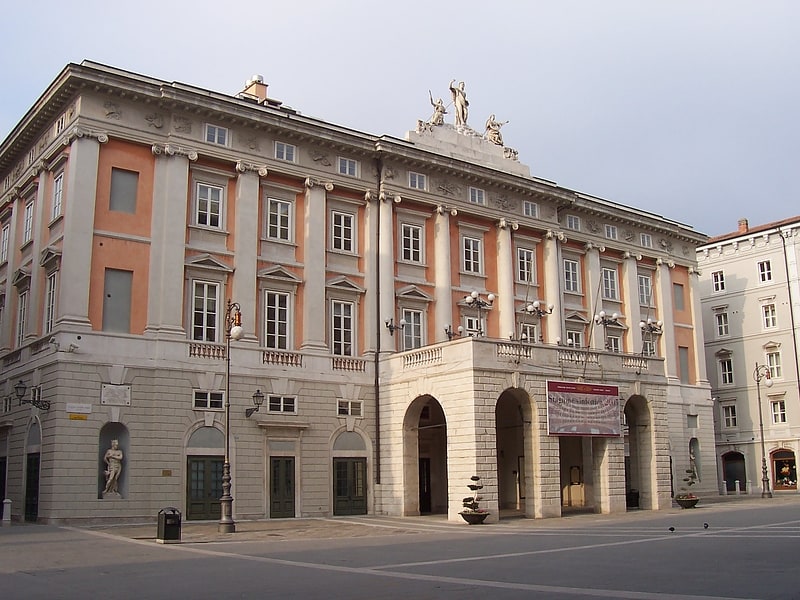
Also known as: Teatro Verdi
Opera house in Trieste, Italy. The Teatro Lirico Giuseppe Verdi is an opera house located in Trieste, Italy and named after the composer Giuseppe Verdi. Privately constructed, it was inaugurated as the Teatro Nuovo to replace the smaller 800-seat "Cesareo Regio Teatro di San Pietro" on 21 April 1801 with a performance of Johann Simon Mayr's Ginevra di Scozia. Initially, the Nuovo had 1,400 seats. In 1821, it became known as the Teatro Grande.
By the end of the 18th century, the need for a new theatre in Trieste became evident. Its main theatre, the Teatro di San Pietro, had become increasingly inadequate and closed in 1800. A proposal to the Austrian Chancery from Giovanni Matteo Tommasini to build a private theatre had existed since 1795 and, in June 1798, a contract was drawn up whereby annual funding would come from the municipality and Tommasini would hold the rights to several boxes and the rights to sell others. Gian Antonio Selva, the architect of the La Fenice in Venice, was engaged, and he designed a classic horseshoe-shaped auditorium. However, his exterior designs were considered to be too plain for the Austrians who then engaged another architect, Matteo Pertsch, to solve the problem, which was accomplished by incorporating elements of Milan's La Scala opera house. The "Nuovo" became a mixture of La Fenice on the inside and La Scala on the exterior.[16]
Address: Piazza Giuseppe Verdi, 34121 Trieste
Canal Grande
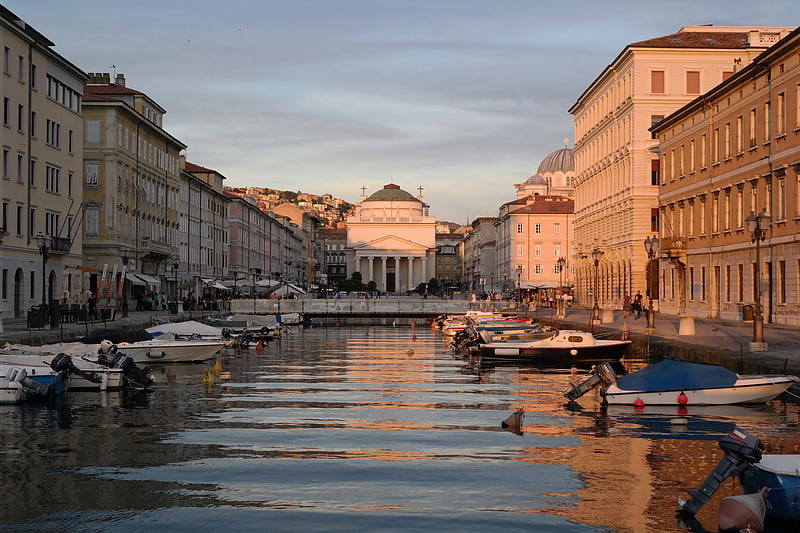
The Canal grande is a navigable canal located in the heart of the Borgo Teresiano, in the very center of the city of Trieste, approximately halfway between the railway station and Piazza Unità d'Italia.[17]
Address: Via Bellini, 34100 Trieste
Synagogue of Trieste
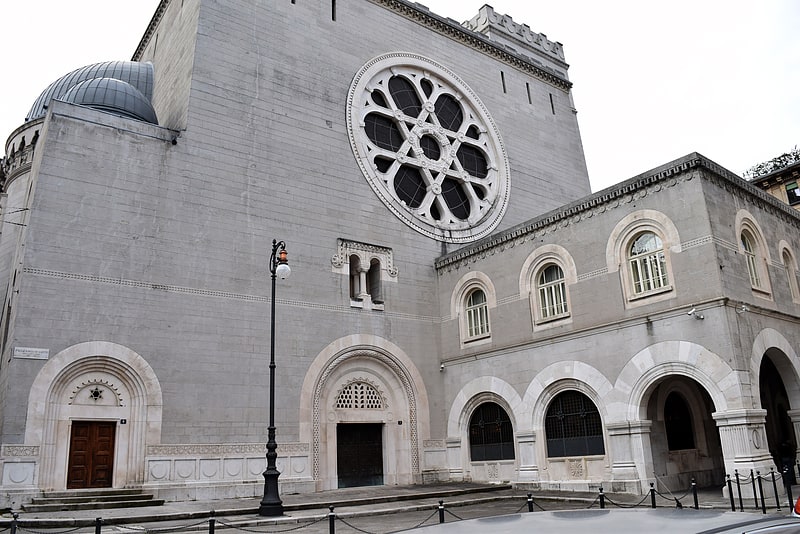
Also known as: Sinagoga di Trieste
Jewish house of worship in Trieste, Italy. The Synagogue of Trieste is a Jewish house of worship located in the city of Trieste, northern Italy.[18]
Address: Via S. Francesco D'Assisi, 19, 34133 Trieste
Museo Sartorio
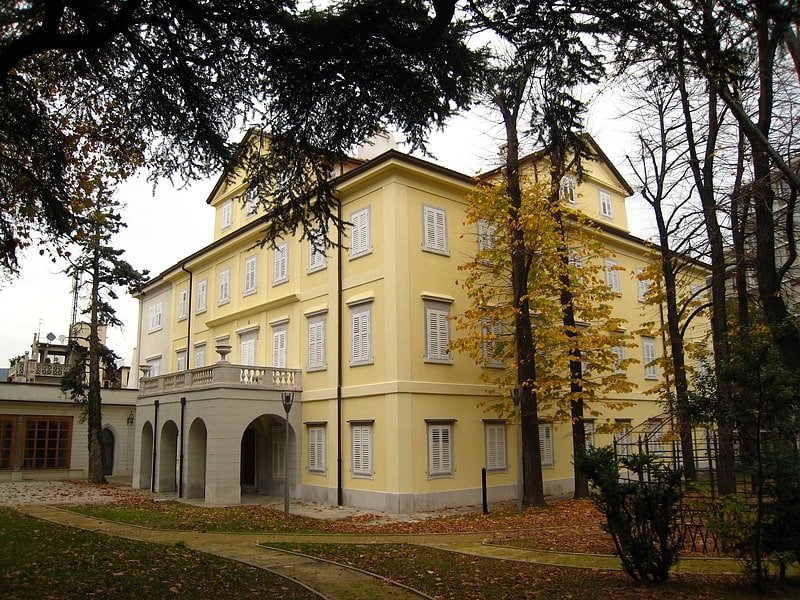
Also known as: Civico museo Sartorio
Museum in Trieste, Italy. The Civico Museo Sartorio is a museum in Trieste, northern Italy. Set in an urban villa, it exhibits ceramics, majolica, porcelain and pictures, typical equipment of Trieste's villas at the end of the 19th century.
Besides the villa itself being a very interesting building architecturally, it contains drawings of Giambattista Tiepolo, painting of Giambattista Pittoni and a glyptotheque. The museum opened to the public partially in 1949 and completely 1954. In 2006, the museum reopened after a period of renovation.
Currently the Museum hosts temporary exhibits and cultural events such as theatre and music in the summer.[19]
Address: Largo Papa Giovanni XXIII, 1, 34123 Trieste
Astronomical Observatory of Trieste
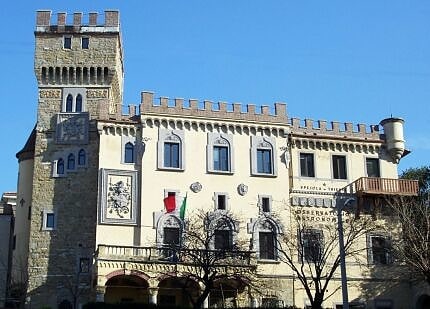
Also known as: Osservatorio astronomico di Trieste
Astronomical observatory. Astronomical Observatory of Trieste is an astronomical center of studies located in the city of Trieste in northern Italy.[20]
Address: Via Giambattista Tiepolo 11, 34143 Trieste